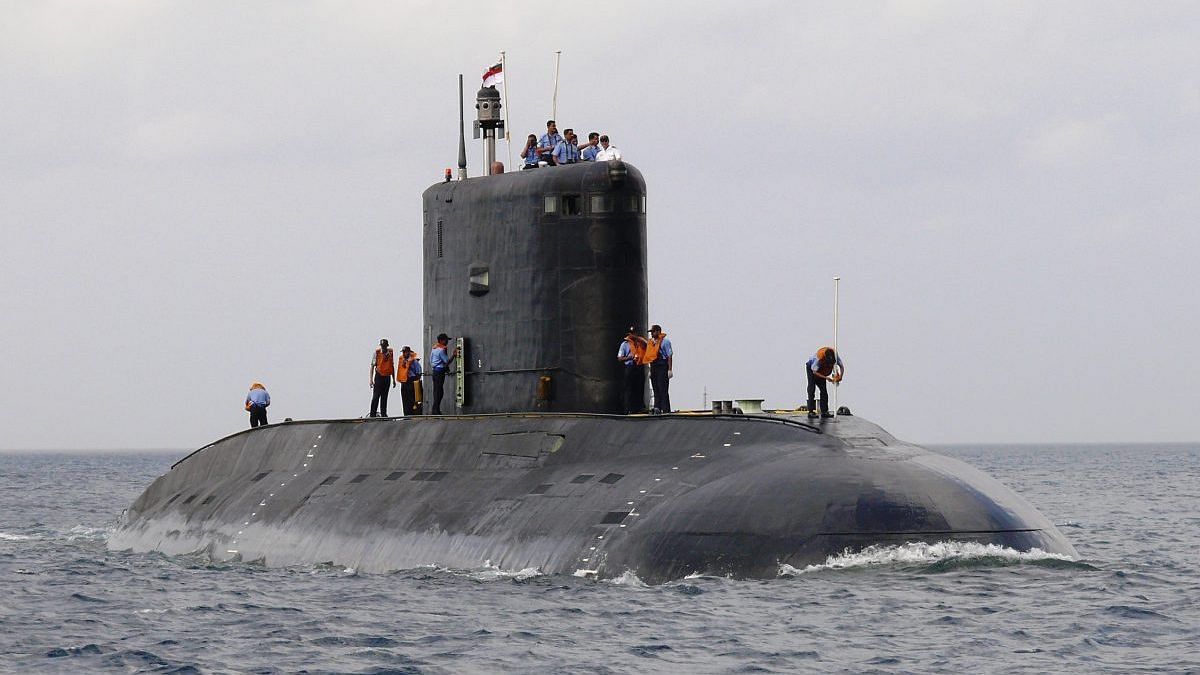New Delhi: The Ministry of Defence Tuesday shortlisted two domestic firms for the multi-billion-dollar contract to build six conventional submarines for the Indian Navy. They are Larsen & Toubro and state-run Mazagon Dock Shipbuilders. Adani Group was also in the race, but wasn’t considered.
The ministry also approved five foreign companies for the mega contract, valued at over Rs 60,000 crore, which is part of a 30-year plan to construct 18 conventional and six nuclear-powered submarines.
According to the Project 75 India, or P75(I), the foreign company will enter into a partnership with an Indian firm under the Strategic Partnership model and jointly build the vessels in India.
“Defence Acquisition Council (DAC) headed by Defence Minister Rajnath Singh, in its first meeting of 2020 and after the constitution of Chief of the Defence Staff, approved shortlisting of Indian Strategic Partners (SP) and the potential Original Equipment Manufacturers (OEMs) that would collaborate with SPs to construct six conventional submarines in India,” a statement released by the defence ministry said.
Navy sources told ThePrint that the Adani Group, which had made a bid to be part of the race, was not considered.
Also read: What is Project 75 India & what it means for Indian Navy
Adani-HSL bid was rejected by Navy earlier
After the Navy invited expressions of interest (EOI) in 2019 to build six conventional submarines under the strategic partnership model, four Indian firms had responded. They were L&T, Mazagon Dock Shipbuilders, Reliance Naval & Engineering, and Hindustan Shipyard (HSL) with Adani Group.
Based on a study and analysis of financial strength and facilities of various shipyards in the country, an empowered committee of the Navy had shortlisted Mazagon Dock and private sector giant L&T as possible partners.
The Navy rejected Adani’s bid with HSL on the ground that it was not in accordance with the approved process. While Adani had the financial strength, it did not have a shipyard of its own and hence bid with HSL.
However, the Department of Defence Production, under which HSL functions, reportedly wanted the Navy to consider the joint bid afresh.
The Congress had recently alleged that the government was trying to favour the Adani Group.
Meanwhile, sources said the five foreign firms selected are Naval Group of France, Rubin Design Bureau of Russia, Navantia of Spain, Daewoo Shipbuilding and Marine Engineering of South Korea and German firm ThyssenKrupp Marine Systems.
Swedish firm SAAB had earlier withdrawn from the project saying there has to be a rethinking on the policy.
Russia is pushing for a government-to-government deal for the submarines while pitching for a joint design.
Also read: INS Arihant, Chinook, P-8I — game-changing Indian military inductions in the last decade




It is not surprising that Russia is pushing for a government-to-government deal for the building submarines. They want to win the ₹45K P75I project by hook or by crook.
Air-independent propulsion (AIP) technology, which would allow a submarine to operate without access to atmospheric oxygen, is an important requirement of the P75I project, but Russia doesn’t have AIP system on any of their submarines.
They claim to have the technology and say, “The only thing left is to package it into a submarine section and demonstrate it to the Indian Navy.”
When L&T Shipbuilding delivered Indian Coast Guard Ship (ICGS) Vikram in April 2018, the first of seven offshore patrol vessels (OPVs) ordered by the Coast Guard, it gave them a pleasant surprise.
L&T’s Kattupalli shipyard took just 36 months to build and deliver that OPV, even though this was the first OPV it had ever built. In contrast, when Goa Shipyard (GSL), the public sector’s premier OPV builder, got an order in April 1990 for four OPVs, it took twice as long to deliver the first. The delay in delivering those four OPVs ranged from two years to eight and a half years.
The Navy has,long complained about lengthy time overruns by defence public sector undertaking (DPSU) shipyards, which are given warship building orders (by value) through “nomination” — which means without competitive tendering.
L&T Shipbuilding has built several offshore patrol vessels, fast patrol vessels and interceptor boats for the Coast Guard. The company is among the four private local shipbuilders that have a permit from the government to build warships.
As they’re NCLT cases, old competetors like ABG Shipyard Ltd, Bharati Shipyard Ltd, Pipavav Defence and Offshore Engineering Co. Ltd out of the reckoning. This forced Adani Defence to seek a JV with Hindustan Shipyard, Vishakapatnam.
“Subsidy is a key issue for shipbuilding in the country. Without subsidy, it is not attractive to put up a shipyard,” Anil Manibhai Naik, who was the then designated CEO and managing director of L&T, said in an interview in July 2007.
Naik, now retired, went on to become the group executive chairman of L&T.
L&T Shipbuilding is now well established and in 2009 worked on India’s first nuclear-powered submarine – INS Arihant. So, it does have some experience with building a submarine.
The HSL-Adani bid wasn’t considered on the grounds that administrative permissions for the joint venture were not in place.
The proposal for the formation of a JV by HSL with Adani Defence had been received and was then still under consideration by the Ministry of Defence.
France believes it has an edge with the existing Scorpene build program with Mazgaon Docks Shipbuilders. Russia seeks a virtual walkover in the program, as their Kilo-class submarines are in use by the Navy.
Hindustan Shipyard Limited is a 1 shipbuilding industry
The Navy has had a very, very bad experience with Visakhapatnam based, state-owned Hindustan Shipyard Ltd (HSL) which operates under the Department of Defence Production. For over eight years HSL struggled to overhaul one of the Navy’s Kilo-class submarines – INS Sindhukirti.
The useful life span of a diesel-electric submarine is 30 years – and the INS Sindhukirti spent about a decade on land, at HSL?? 😁😁😁
Odisha
Low family sir
Sir job government or private